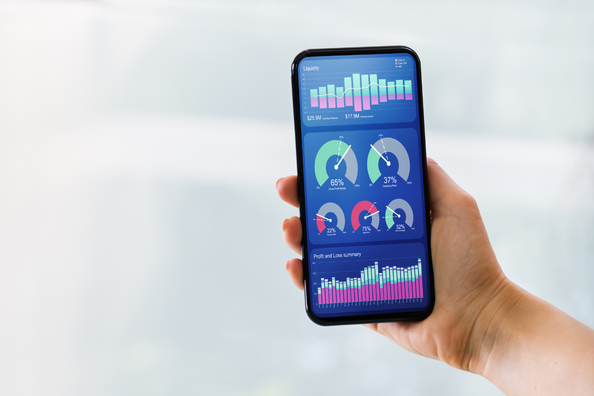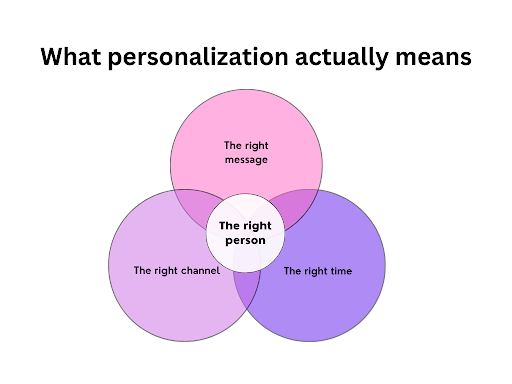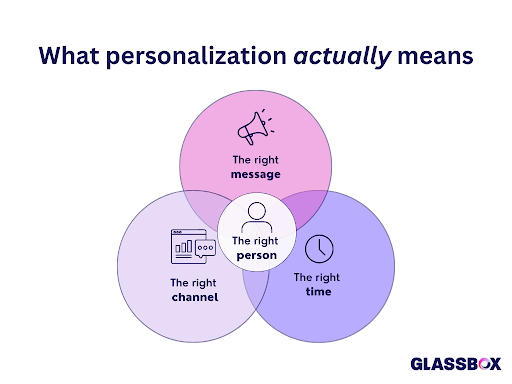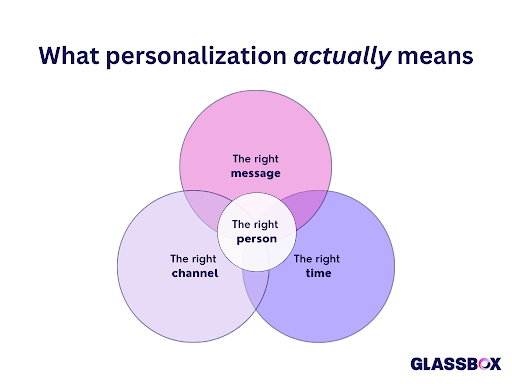
Everything you need to know about digital marketing analytics
It’s here! The shiny new mattress you ordered off Amazon. You rush to open the box and immediately recoil in horror. The mattress looks nothing like the fluffy white cloud you were expecting. It’s dirty and deflated and—is that mold?! This isn’t just the stuff those What You Order vs What You Get memes are made of. It’s also how customers frequently feel when they interact with brands online—frustrated, underwhelmed and disappointed.
Consumers and B2B buyers now expect personalized experiences that reflect their particular needs, interests and previous interactions—but organizations often fall short. Sixty-six percent of customers say they’re treated like a number, while 63% percent of digital marketing leaders struggle with delivering personalized experiences.
A lot of this boils down to insufficient data, making it impossible for marketers to effectively measure and improve those experiences in the first place. Sure, you can hop onto Google Analytics to monitor page views, bounce rates and time on page. But these KPIs don’t provide enough nuance or context to accurately assess how users are interacting with your brand on, off and around your website. More than 50% of customers engage with three to five channels, while B2B buyers average 27 interactions before making a purchase decision.
Digital marketing analytics is a combination of tools and processes that enable marketers to go beyond top-level website metrics and drill into specific campaigns and channels. This generates invaluable insights to optimize individual touchpoints in the buyer’s journey and improve the quality of traffic at its original source.
Not sure how digital marketing analytics works or where to get started? Consider this your primer. We’ve distilled the core essentials to help you effectively measure, analyze and boost performance—and deliver a better customer experience in the process.
You’ll learn:
What digital marketing analytics actually means
Why digital marketing analytics is useful
How to use digital marketing analytics and web analytics together
The most important digital marketing analytics to track
A run down on different types of digital marketing analytics tools
Let’s get started!
What is digital marketing analytics?
Digital marketing analytics refers to the technology, tools, processes and practice of measuring the performance of different marketing campaigns and channels. A subset of digital analytics, it enables marketers to break down the overall buyer’s journey into a sequence of touch points across various campaigns and channels. This data can then be examined for meaningful trends and opportunities to test, optimize and improve interactions.
With a deeper understanding of how users interact with your brand at different stages—what they’re looking for, what they’re responding to and where they’re encountering friction—you can then refine each channel and campaign accordingly. This doesn’t just improve the overall customer experience, but enables you to more effectively qualify website traffic at its original source, increasing likelihood for conversion.
Why is digital marketing analytics useful?
You need a lot of data to deliver personalized experiences your customers now demand. Fortunately, data isn’t hard to come by. In some ways, delighting customers has never been easier—especially when you consider that less than 100 years ago, brands were resorting to literal psychotherapy to figure out everyone’s shopping habits. Now marketers can use digital marketing analytics tools to gather critical intel in their sleep—and then fine tune campaigns and channels until every interaction feels relevant and personalized.
Thanks to AI, websites can even adapt content to user behavior in real-time. Just look at Amazon. You can search for any item—no matter how peculiar—and poof! The entire site will instantaneously respond to this interaction—even if no one else on the planet is perusing dog snoods. It doesn’t get more personalized than that. 👀
l you have to guide those experiences are surface-level metrics and guesswork.

At the same time, delighting customers has never been harder. Amazon—along with AI-driven platforms like Netflix and Spotify—have caused a permanent, radical shift in consumer and buyer behavior. Demands for a seamless, relevant and highly personalized experience now follow users into every interaction:
73% of customers expect companies to understand their unique needs and expectations.
70% of consumers are more likely to buy from companies that understand how they use their products or services
74% of customers feel frustrated when website content is not personalized.
56% of B2B buyers expect to find whatever they’re looking for on a company’s website in three clicks or less.
79% of consumers say they are only likely to engage with an offer if it's been personalized to reflect their previous interactions with a brand.
52% of customers expect offers to always be personalized.
It doesn’t matter if you’re marketing to other businesses or directly to consumers— personalization is no longer a differentiator, but table stakes. Premature messaging, irrelevant offers and generic personalization are common sources of friction that can undermine the entire customer experience—all of which stem from insufficient data.
Customer's Expectation

Customer's Reality

So what does effective personalization actually look like? To meet customer expectations, you need to deliver:
The right message
To the right person
On the right channel
At the right time



There are just too many variables and combinations to measure with top-level data alone, which is why marketing analytics is so useful. According to Mckinsey, organizations who excel at personalization by “tailoring offerings and outreach to the right individual at the right moment with the right experiences” generate 40% more revenue than their competitors.
With digital marketing analytics, you can not only provide more relevant and personalized offers, but a more relevant and personalized experience overall.
Digital marketing analytics vs. Web analytics
Digital marketing analytics helps you uncover rich insights on a channel or campaign level, but it doesn’t work well in isolation. You still need web analytics to tie everything together and gauge how customers are engaging with your brand—specifically, your website—overall.
Let’s say, for example, you decide to turn your harrowing mattress experience into an actual buyer’s guide. You launch your new eBook, create a landing page and start promoting on multiple channels—but the conversion rates are nonexistent. Before you jump into A/B testing and landing page optimization, you need to understand why it isn’t performing. Combining digital marketing analytics and web analytics is the only way to get the entire picture.
Web Analytics | Digital Marketing Analytics |
Number of visitors | Social media engagement by channel (post likes, comments and shares) |
Pageviews | Email open rate and click-through-rate (CTR) |
Bounce rate | Google ad impressions |
Average session duration | Landing page ranking by keyword in search engine results pages (SERP) |
Traffic by channel | Conversion rate |
If you’re promoting your buyer’s guide on TikTok, but don’t see a lot of traffic coming from this source, then the low conversion rate is likely due to focusing on the wrong channel, rather than an issue with the landing page itself. If page views and average session duration are both high but the conversion rate is still low, that’s a sign you need to optimize the landing page copy or form instead. In leveraging both digital marketing analytics and web analytics together, you can create a more robust and accurate dataset for measuring, analyzing and improving.
Digital marketing analytics tools and metrics
Digital marketing analytics spans several categories of tools and metrics, including:
Social media
Every major social media platform offers some degree of native analytics for monitoring post and channel performance. However, marketers often source data from social media management tools like Hootsuite, Buffer or Sprout Social, which offer more advanced reporting and dashboard functionality.
Common social metrics include:
Reach — How many people saw a particular post
Impression — How many times a particular post was viewed
Engagement rate by post (likes, reactions, comments and shares)
Click-through rate (CTR) by post
Total views and completion rate by video
Audience/follower growth rate
Email marketing
Email marketing software is another staple when it comes to digital marketing analytics. Popular solutions like Mailchimp, Salesforce Email, Constant Contact and Campaign Monitor all track user engagement and performance with emails deployed through their platform.
Common email marketing metrics include:
Email open rate
CTR — Percentage of recipients who click one or more links in the email
Conversion rate — Percentage of email recipients who clicked on a link and completed the desired action i.e. filling out a landing page form
Bounce rate — Percentage of undelivered emails
Email sharing/forwarding rate
Subscriber growth rate
SEO / PPC
SEO metrics track how well a particular page, campaign or website is performing in search engine results pages or SERPs. This closely overlaps with web analytics, as it requires breaking down traffic sources. However, marketers also employ tools like Ahref and Moz to gather data on keyword rankings, as well as Google Ads to analyze pay-per-click (PPC) ads.
Common SEO / PPC metrics include:
Keyword rankings — Organic ranking position in the SERPs for a particular keyword
Search visibility — Percentage of clicks a particular keyword that land on your website
Organic traffic conversion rate — Percentage of users who originate from organic search and complete a desired action on your website
PPC ad impressions
PPC ad CTR
PPC ad conversion rate
Tool configurations and tech stacks vary wildly by organization. What’s overkill for one team might be insufficient for another. The good news is, there’s no shortage of ways to build out your digital marketing analytics ecosystem. Some marketers manually compile data from multiple sources and create a simple, makeshift dashboard in Google Sheets or Excel. Others use complex modeling tools. You can even use an AI-driven analytics platform to automatically surface insights for you.
However you slice it, the key is drilling down into every campaign and channel, and then connecting those insights to a holistic buyer’s journey. Eighty percent of consumers are more likely to buy from a company that offers personalized experiences—without digital marketing analytics, al




